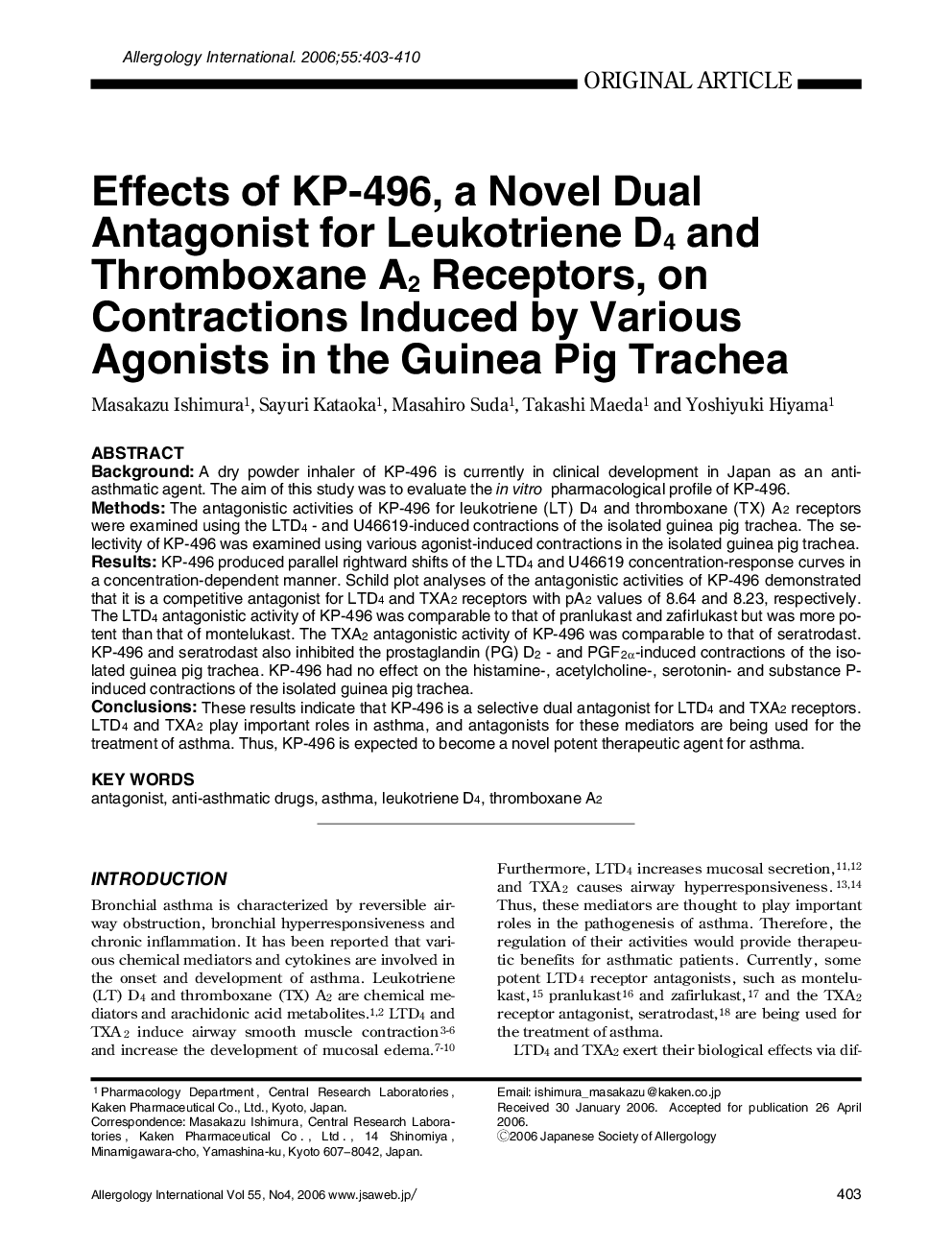| Article ID | Journal | Published Year | Pages | File Type |
|---|---|---|---|---|
| 3341149 | Allergology International | 2006 | 8 Pages |
ABSTRACTBackgroundA dry powder inhaler of KP-496 is currently in clinical development in Japan as an antiasthmatic agent. The aim of this study was to evaluate the in vitro pharmacological profile of KP-496.MethodsThe antagonistic activities of KP-496 for leukotriene (Lt) D4 and thromboxane (TX) A2 receptors were examined using the LTD4 - and U46619-induced contractions of the isolated guinea pig trachea. The selectivity of KP-496 was examined using various agonist-induced contractions in the isolated guinea pig trachea.ResultsKP-496 produced parallel rightward shifts of the LTD4 and U46619 concentration-response curves in a concentration-dependent manner. Schild plot analyses of the antagonistic activities of KP-496 demonstrated that it is a competitive antagonist for LTD4 and TXA2 receptors with pA2 values of 8.64 and 8.23, respectively. The LTD4 antagonistic activity of KP-496 was comparable to that of pranlukast and zafirlukast but was more potent than that of montelukast. The TXA2 antagonistic activity of KP-496 was comparable to that of seratrodast. KP-496 and seratrodast also inhibited the prostaglandin (PG) D2 - and PGF2α-induced contractions of the isolated guinea pig trachea. KP-496 had no effect on the histamine-, acetylcholine-, serotonin- and substance P-induced contractions of the isolated guinea pig trachea.ConclusionsThese results indicate that KP-496 is a selective dual antagonist for LTD4 and TXA2 receptors. LTD4 and TXA2 play important roles in asthma, and antagonists for these mediators are being used for the treatment of asthma. Thus, KP-496 is expected to become a novel potent therapeutic agent for asthma.
